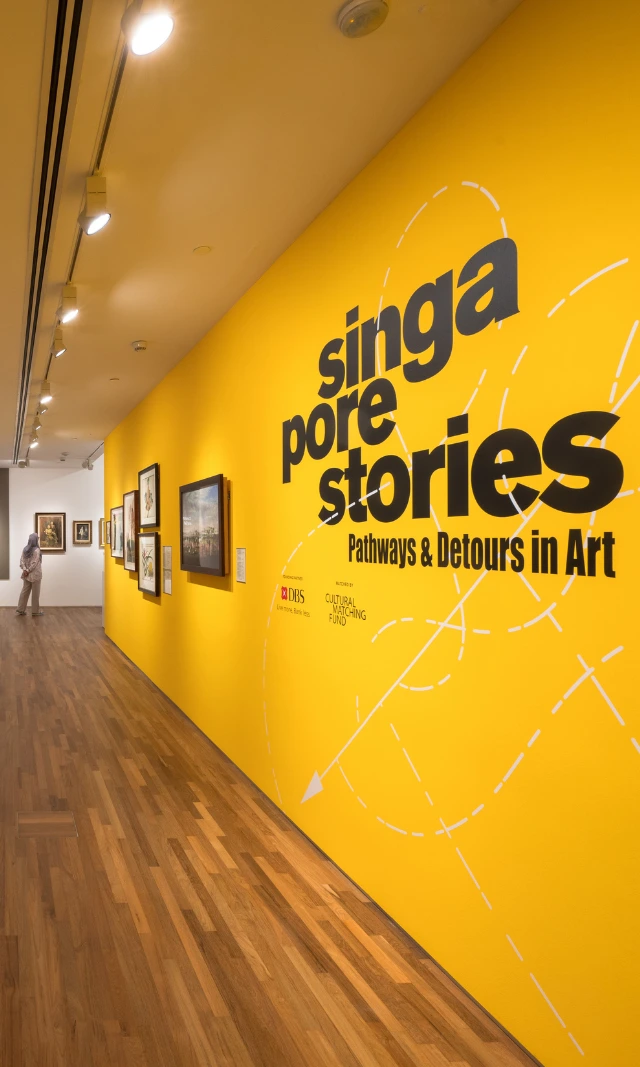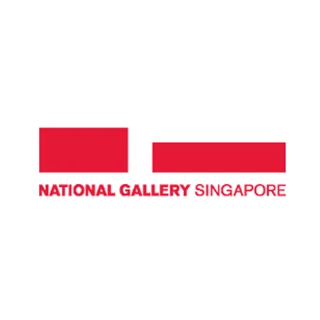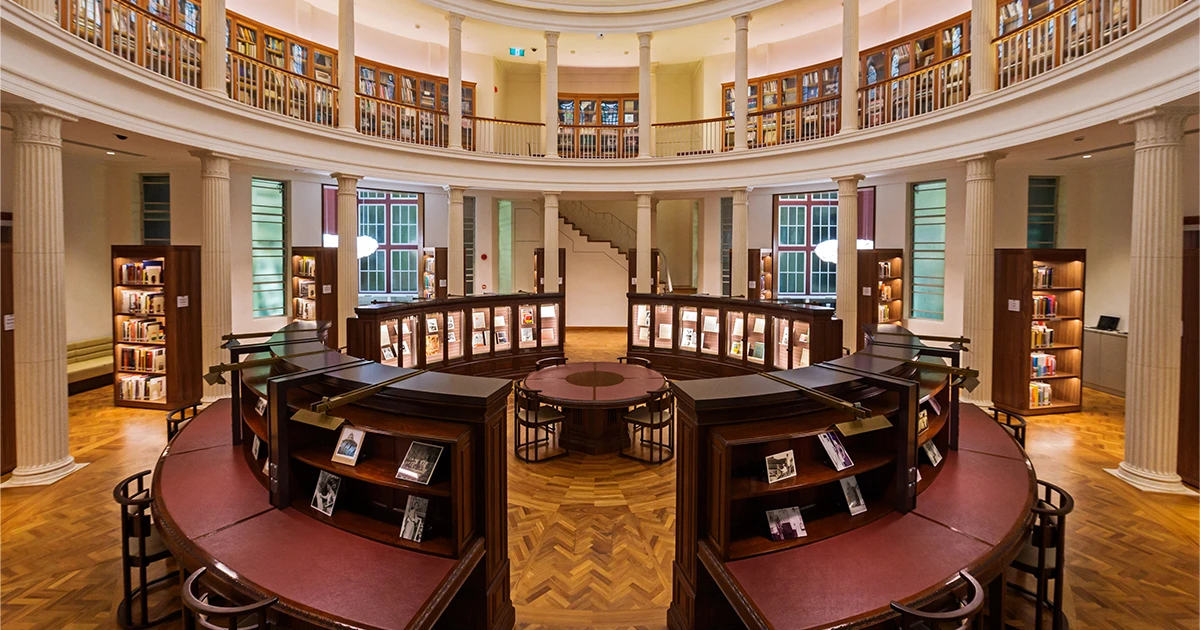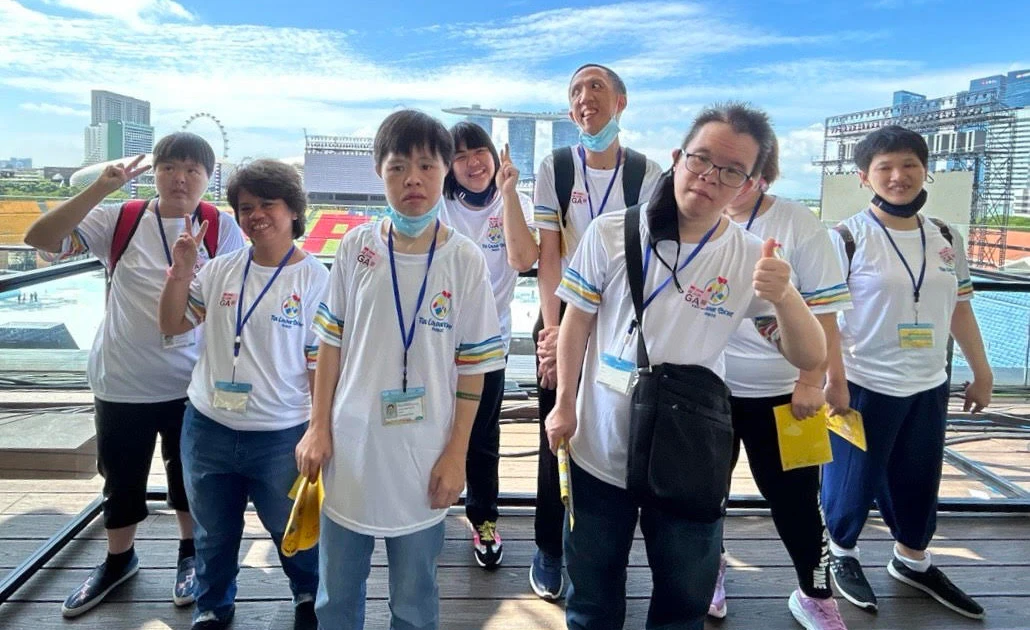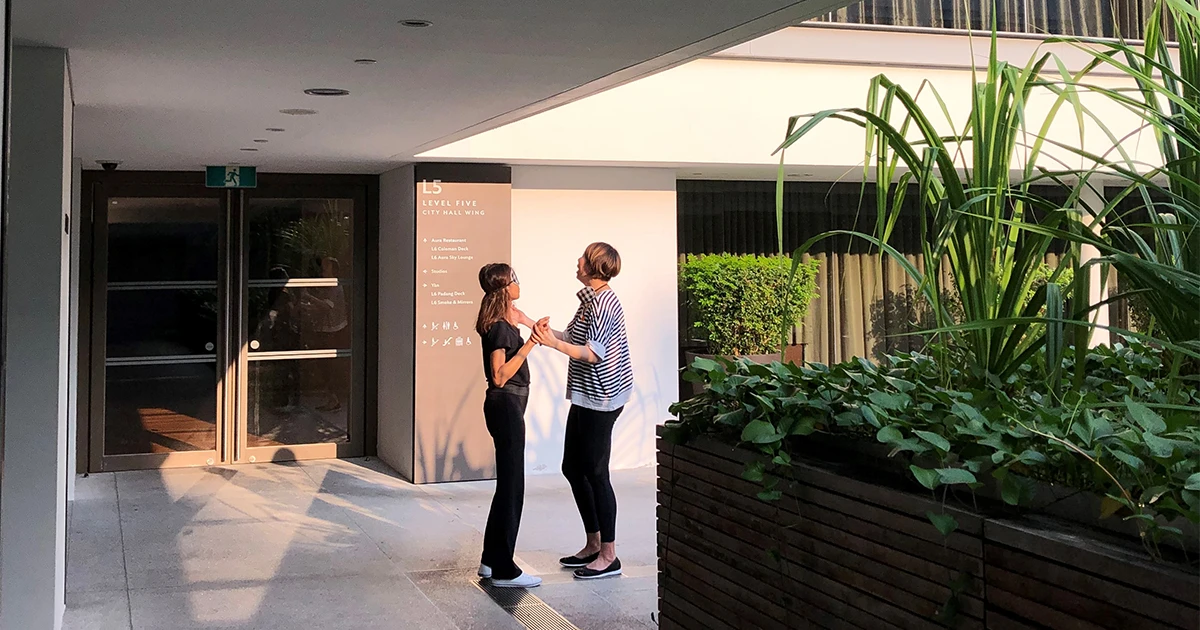Search Our Collections: Introducing the New Collections Search Portal
Measures to prevent the spread of COVID-19 have prompted institutions worldwide to explore new ways of providing access to their collections. The Gallery's Information Management and Library & Archives teams explain how the Gallery’s Collections Search Portal functions as a window into our vast artwork, library, and archival databases.
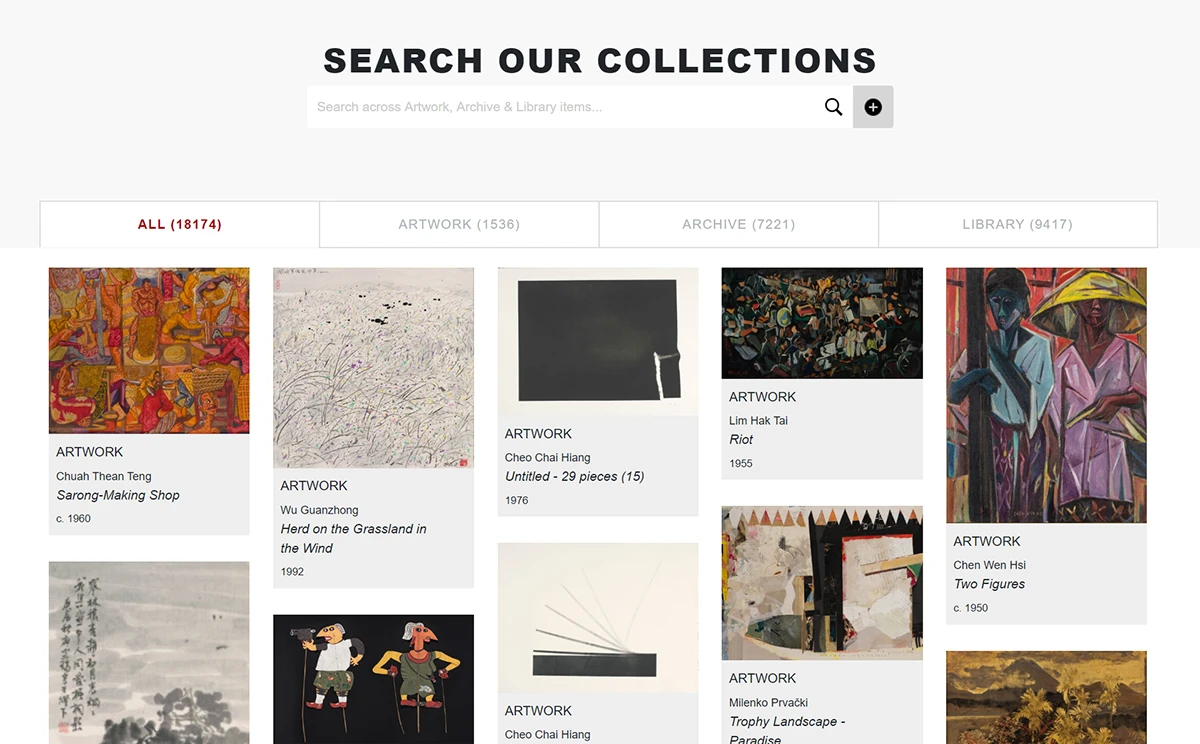
The Collections Search Portal was launched in conjunction with the opening of the Rotunda Library & Archive in October 2019. A two-pronged initiative, it aims to improve access to both the Gallery’s physical and digital collections of information on artists in Singapore and Southeast Asia. The Collections Search Portal brings together three databases on one integrated platform—the Gallery’s physical collection of books and reference materials, the Artwork Collection Database and Digital Archives Collection—allowing users to browse and search across the Gallery’s artwork, archive and library collections.
The need for an integrated Collections Search Portal
Before the Portal’s launch in 2019, each of these collections resided on its own unique system. Users could make only isolated searches within each collection, limiting the potential for discovering and understanding the rich links that exist across these three collections. While artwork collections and library holdings are available on many museum websites around the world, the function of cross-searching over three different collection types is unique to the Gallery.[1]
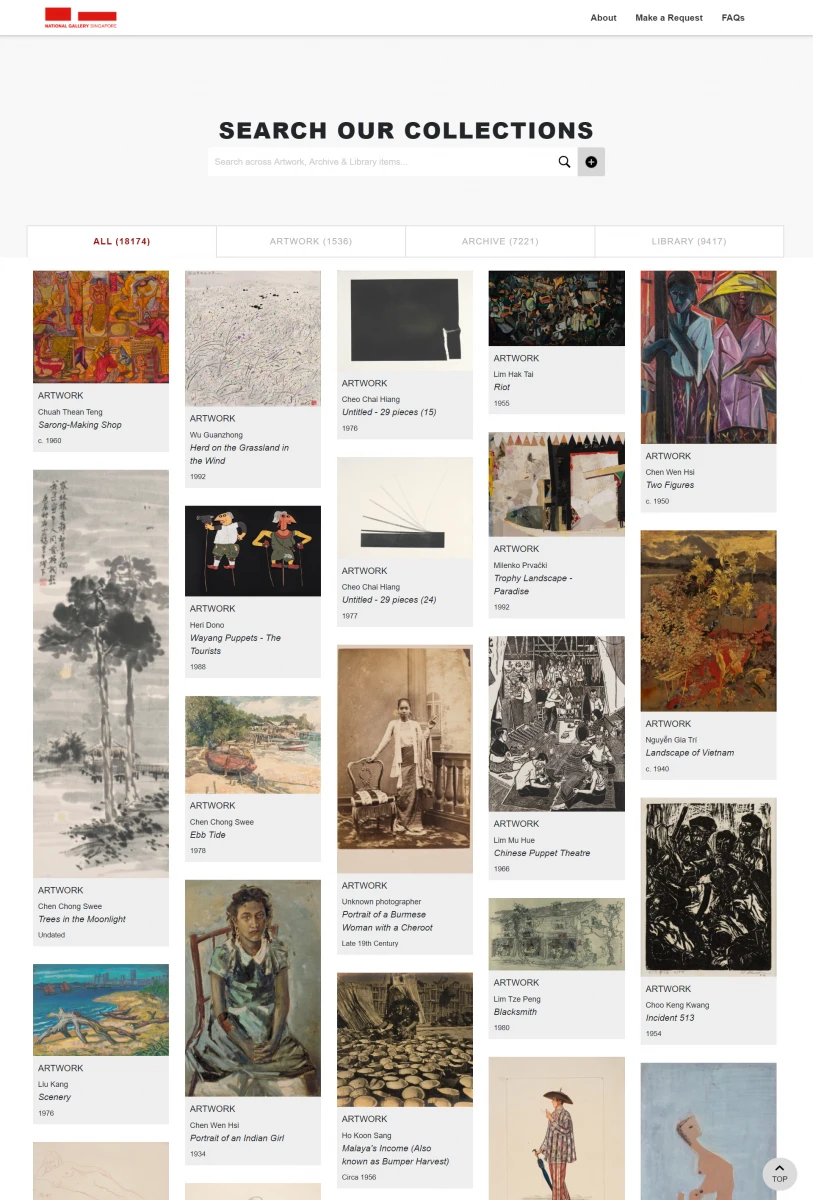
Designing the new Collections Search Portal
The development of the new Collections Search Portal began in late 2018, with the project team defining and organising our requirements into five broad categories:
Homepage
Search functions
Display of records
Access controls
Request for digital copies
Homepage
Our two main requirements for the homepage were that it had to be aesthetically inspiring and user-friendly. One of the biggest challenges the team faced was how to display the three collections on the homepage without overwhelming the user. The team went through many design changes for the homepage before settling on the current layout featuring tabs for each individual collection. This gives focus to each collection and allows easy navigation from one collection to another.
The images are presented in their original aspect ratios alongside key textual information about the resource, also known as metadata, for easy identification. Even without performing a search, using the tabs, users can browse through the artwork, archive, and library collections. Individual artwork and archival records are displayed randomly, and every time the user refreshes the page, different records are brought to the fore. This dynamic approach allows users a glimpse into our vast digital collections. At the same time the library tab is arranged by new arrivals, so frequent users can find the latest items catalogued for browsing at the Rotunda Library & Archive.
Search functions
Users who wish to quickly locate a particular artist, artwork, archive record or book title can do so using the prominent Basic Search bar on the homepage, or the Advanced Search function located in the dropdown menu. The tabbed approach in the Advanced Search allows users to search in the specific metadata fields unique to each collection.
The fundamental differences in data drawn from the materials in each collection posed a challenge to determining a common way they could be searched for online. Firstly, artwork and archive records exist as digital files such as JPEG images, PDFs, audio and audiovisual clips; whereas the library collection consists of physical books and catalogues that can be browsed onsite. Secondly, all materials are catalogued according to museological and international standards, such as ISAD(G) (General International Standard Archival Description) for archival records, and MARC (machine-readable cataloguing) standard for library records. Because of these different standards, each collection has its own set of unique metadata fields. This presented a challenge to how these three different collections could co-exist on one platform.
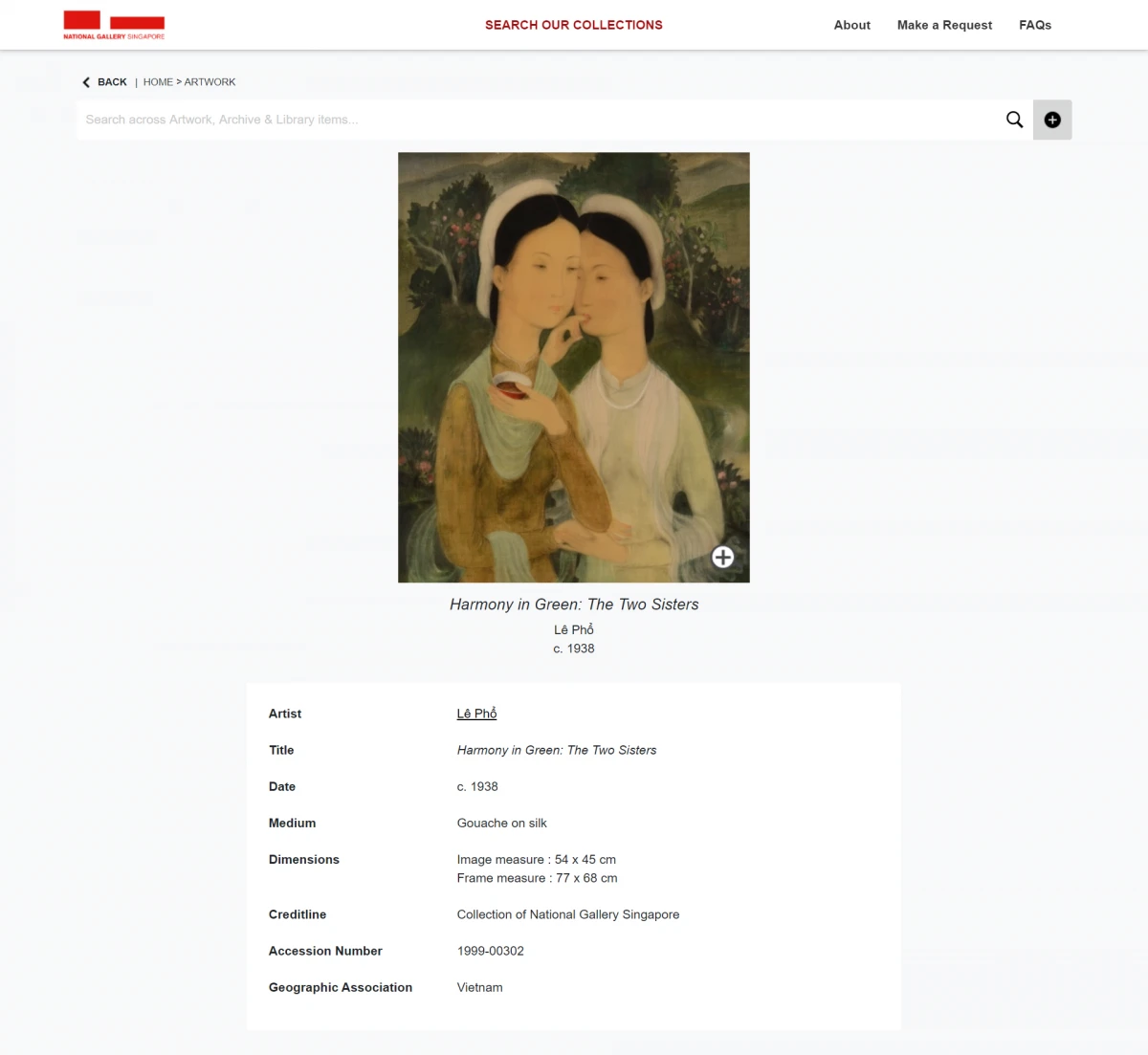

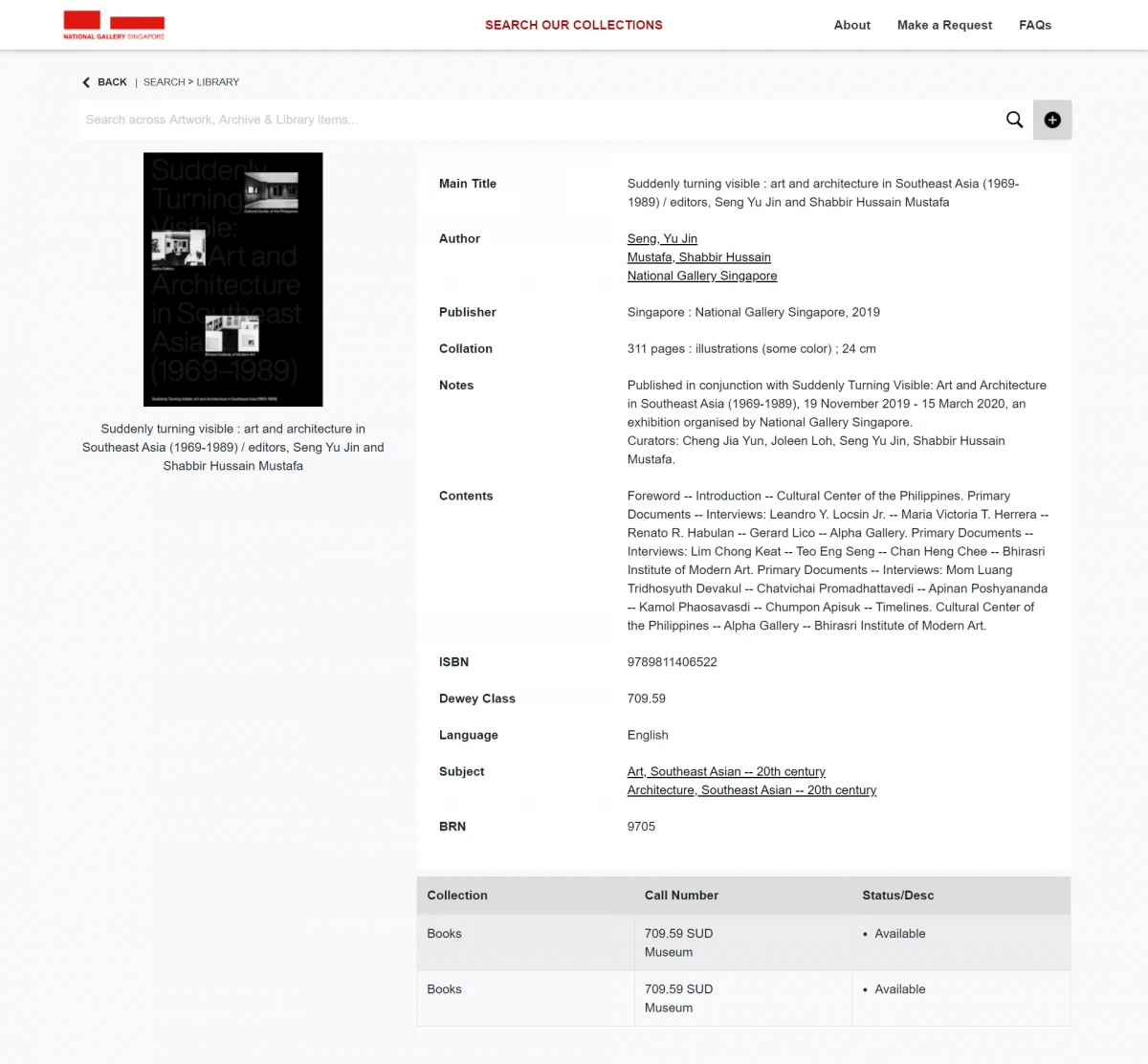
Artwork Advanced Search Fields | Archive Advanced Search Fields | Library Advanced Search Fields |
|---|---|---|
Artist | Title | Author |
Title | Creator | Main Title |
Dating | Subject | Publisher |
Creditline | Fonds/Collection | Series Title |
Accession No | Date | ISBN |
Geographic Association | Scope and Content | ISSN |
| Reference Code | Dewey Class |
|
| Language |
|
| Subject |
|
| Collection |
|
| Country |
Comparing the different Advanced Search fields unique to Artwork, Archive and Library records.
The tabbed approach again helps navigate these problems—search results are displayed according to the tabs for the corresponding collection. Library search results are displayed in List view by default as this is more suitable for the inherent non-digital nature of the materials. Grid view, as seen on the homepage, is more suited to the image-heavy artwork and archive collections. In “List view,” information such as the Call Number and availability of the books is listed clearly for quick retrieval at the Rotunda Library & Archive. Users can switch between Grid and List views in all categories, depending on their preference. Filters can also be used to narrow down search results according to specific information, such as medium, language or format.

Filters for Artwork | Filters for Archive | Filters for Library |
|---|---|---|
Artist | Language | Author |
Medium | General material type | Language |
Geographic association | Storage locations | Subject |
Show records with image | Access restrictions code | Collection |
|
| Item availability |
|
| Country |
The available filters for each collection.
Display of records
After performing a search, users can click on a resultant image to display its individual record. Images in archive and library records are aligned to the left to cater for their accompanying text-heavy metadata. On this page, users can enlarge the images or view PDFs and audio-visual records using the portal’s built-in viewer. While the speed of this viewer was initially hampered by the size of the digital files, improvements were made to compress these files for an uninhibited viewing or listening experience.
The individual record page provides extensive metadata of each record, such as medium of an artwork, transcriptions of a letter, named persons in a photograph or content listing of a book.
Metadata for Artwork | Metadata for Archive | Metadata for Library |
|---|---|---|
Thumbnail | Thumbnail | Book cover image |
Artist* | Reference Code | Main Title / Variant Title |
Date of birth | Title / Other Titles | Author* |
Date of death | Fonds / Collection* | Edition statement |
Title | Creators* | Imprint |
Date Created | Date | Collation |
Medium | Collector / Custodian | Series Title* |
Dimensions | Language of Materials | Notes |
Credit Line | Subject* | Contents |
Accession Number | General Material Type | Summary |
Geographic Association | Extent and Medium | ISBN / ISSN |
Storage Location | Dewey Class | |
| Access Restrictions Code | Language |
| Conditions Governing Access | Subject* |
| Usage Restrictions Code | Collection |
| Conditions Governing Use and Reproduction | Call number |
| System of Arrangement | Status / Description |
| Archival History |
|
| Immediate Source of Acquisition or Transfer |
|
| Existence and Location of Originals |
|
| Existence and Location of Copies |
|
| Notes |
|
| Scope and Content |
|
The metadata fields (as of May 2020) that are displayed for individual records, where available. Fields marked with * appear as hyperlinks that lead to other records with the same values.
The Archive’s metadata schema is based on ISAD(G) or General International Standard Archival Description, a system developed by the International Council on Archives (ICA) used by archives around the world. Through ISAD(G), the context and content of archival materials are identified and explained through appropriate metadata representations while maintaining the original order in which they were created and kept. This follows the archive’s fundamental principles of provenance and original order. Applying these principles to the Gallery’s Portal means that each artist’s archive is arranged and described separately from archival materials that came from another source. While cross-references can be made, the system of arrangement and context of description are determined through the source or creator of the archive, i.e. the artist or art institution.
Access controls
Challenges in publishing artwork images and records
The Gallery has a collection of over 9,000 works of art, built over 60 years. As the Gallery inherited varying standards of data and documentation, each entry in the collection database must be reviewed before any of these works can be published online. Each entry must contain key artwork information that reflects the latest research findings, and follow the Gallery’s house style. The copyright status of the artwork is reviewed as artwork images can only be published alongside the record if the Gallery has obtained permission from the copyright owner to do so, or if the artwork is in the public domain. Obtaining permission can be challenging, as just like artists and artworks, copyright owners can be scattered across the globe or difficult to locate. In an age when images are instantly copied and shared, we aim to strike a balance between making our collection accessible, while respecting copyright laws and the wishes of copyright owners. When permission has not yet been obtained, the record may still be published with a placeholder “Image not available” graphic. Finally, the team checks each artwork image for accuracy and quality, and corrects the image where necessary. As a courtesy to artists, artwork images are always published in full, without alterations.
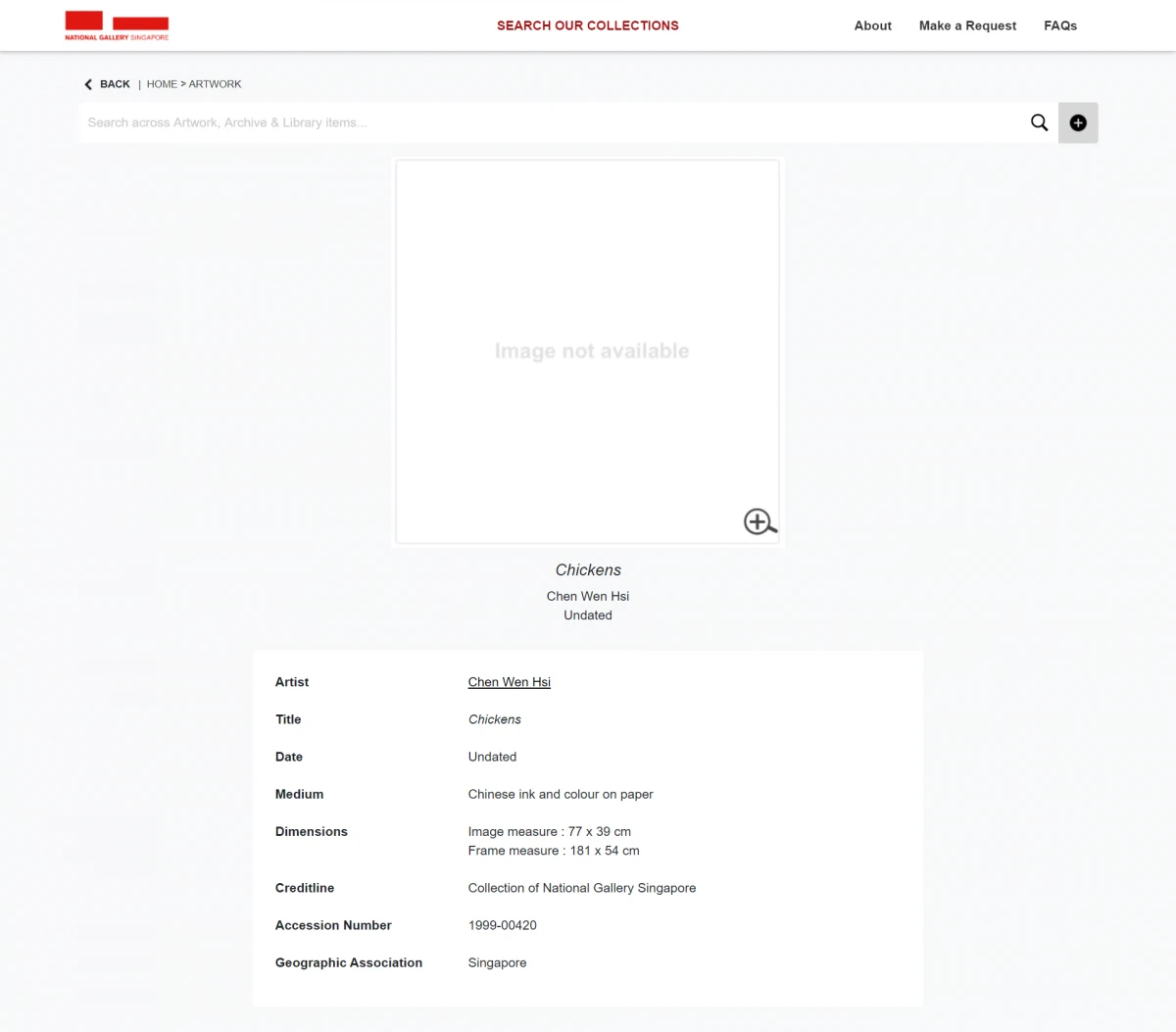
Challenges in publishing archival records
The Archive comprises over 20,000 records of artists’ primary resources such as photographs, drawings, sketches, letters, writings, interviews, and recordings of performances, as well as Southeast Asian art catalogues and publications from the 19th and 20th centuries, news clippings and exhibition ephemera like invitation cards, brochures, and posters. The broad types and formats of archival materials posed two main challenges. Despite these varied types of materials, their descriptions must be standardised. The ISAD(G) provides guidance in resolving this through an extensive explanation of each element of description. The next challenge was setting up the portal to handle different file formats. This was resolved by publishing only low-resolution viewing copies online, which improves the system’s display performance and narrows the file formats required for display.
Making the digital archive accessible benefits local and international researchers who need key resources about artists and art history for a thesis, publication, broadcast, or exhibition. For example, an artist’s travel photos have been useful in the analysis of an artwork inspired by the people and places the artist encountered. An artist’s letters and notes have helped to identify correct artwork titles, dates, and media. The Archive also contains rare photographs of artists taken during an art demonstration or performance, as well as portraits used for a broadcast or article feature about an artist’s life.
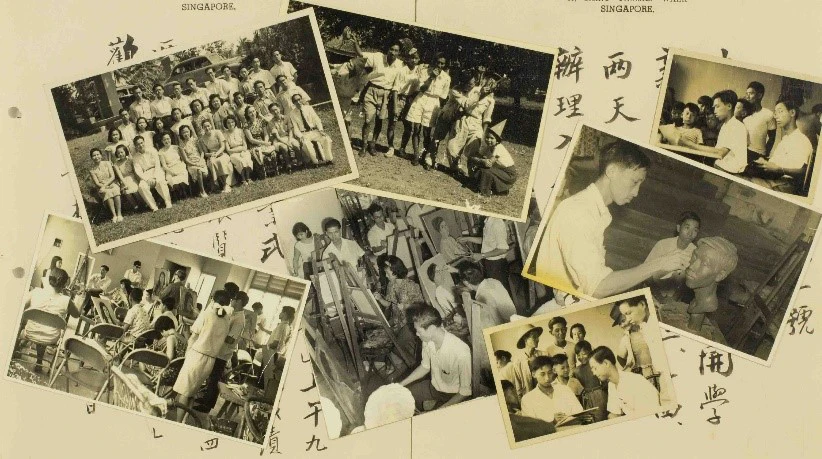
Onsite vs offsite access
The Archive is configured for two levels of access, based on copyright permissions. Different artists and their families, art institutions, and collectors from Southeast Asia and beyond have generously contributed to the Archive. Alongside their contribution, the Archive clears a Non-Exclusive Copyright License Form with each copyright owner, who has the authority to decide the extent of access and usage of a loaned or donated archive. Some archival material may contain sensitive content that the copyright owner may be hesitant to make openly available online. As such, onsite and offsite access pertain to the different copyright permissions granted. While offsite access allows users to view the digital asset attached to a record (e.g. photograph, full PDF, and full video) online, onsite access allows users to view the digital assets only through the terminals available at the Rotunda Library & Archive.
Request for digital copies
One of the Portal’s key functions is an online form to submit requests for digital copies of artworks and archives. These requests were previously made only via email or hardcopy form. The new online form allows us to track requests through the administrative backend system, better understand the trends of research needs, and manage our response times. The Gallery has been actively working on clearing copyrights for artwork and archive records in our collections to allow greater access and sharing of digital reproductions for research or educational purposes.
Upcoming Enhancements and Future Aspirations
The Collections Development team continues to digitise archival records and obtain copyright clearance for artworks. New records are added almost weekly, and existing metadata is continuously cleansed and updated. New metadata fields will also be made available. Further to this, we are developing a “Related items” feature to suggest related records across all three collections. This will appear on record detail pages, allowing further cross-collection associations and new discoveries.
Another exciting development is a function on the Portal that will allow the Archive’s metadata to be crowdsourced. While the Gallery is continuously researching, checking, and updating its records, some details remain unidentifiable. Through this system, users can share their knowledge with the Archive. We hope to move closer towards a more democratised platform this way.
Many archives around the world provide finding aids, a tool for users to navigate the sea of available materials. We plan to introduce one customised to our collection, that will provide users with better understanding of each artist’s archive through a description of how they are grouped or arranged, whether by date, events, or type of material, as well as the content and extent of each group. This will allow for broader association of each archival record, which takes into consideration the importance of highlighting archival provenance and preserving original order of materials.
Editor’s Note
For more information on the Collections Search Portal, watch the Library & Archives’ quick instructional videos on How To Begin Your Search and How to Make A Request.
Notes
- Explore the collections databases of some museums and art archives in the region and beyond, such as M+ Museum https://collections.mplus.org.hk/en/, Museum MACAN https://www.museummacan.org/collections, Fukuoka Asian Art Museum https://jmapps.ne.jp/faam_en/, Queensland Art Gallery and Gallery of Modern Art (QAGOMA) http://collection.qagoma.qld.gov.au/qag/imu.php?request=search, Filipinas Heritage Library at the Ayala Museum https://www.filipinaslibrary.org.ph/, Asia Art Archive https://aaa.org.hk/en, and Indonesian Visual Art Archive http://ivaa-online.org/.








